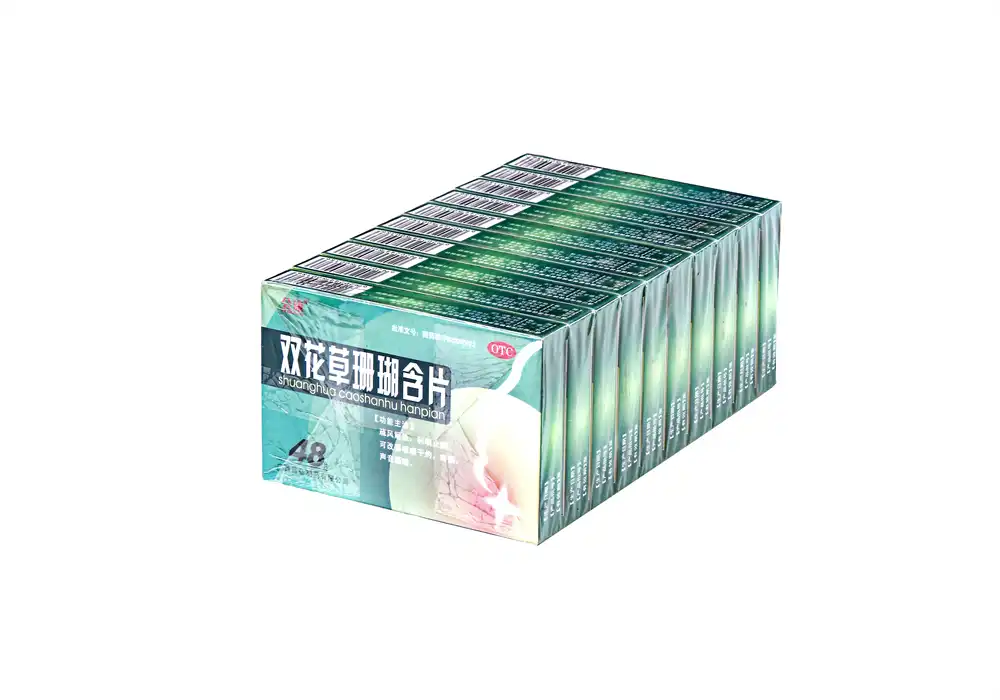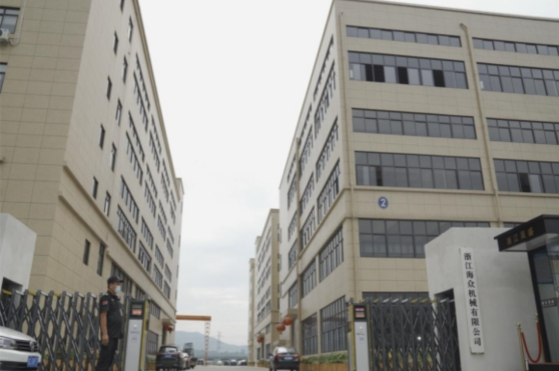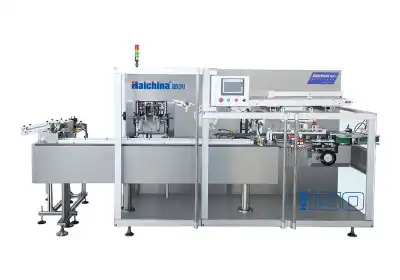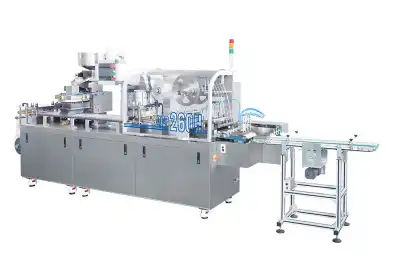Cellophane Overwrapping Machines Explained: A Complete Guide
Cellophane overwrapping machines are sophisticated packaging devices that efficiently encase products in transparent, protective cellophane film. These versatile machines are essential in various industries, including pharmaceuticals, cosmetics, food, and consumer goods. They provide an attractive, tamper-evident packaging solution while preserving product freshness and integrity. This comprehensive guide delves into the intricacies of cellophane overwrapping machines, exploring their functionality, benefits, and applications. Whether you're a seasoned packaging professional or new to the industry, this article will equip you with valuable insights into these indispensable packaging tools.

Understanding Cellophane Overwrapping Technology
The Evolution of Overwrapping Machinery
Cellophane overwrapping technology has come a long way since its inception. Early machines were manual or semi-automatic, requiring significant operator involvement. Today's advanced overwrapping machines boast fully automated systems, incorporating cutting-edge sensors, servo motors, and programmable logic controllers. This evolution has led to increased efficiency, precision, and output capacity, meeting the demands of modern high-speed production environments.
Core Components of Cellophane Overwrapping Machines
Modern cellophane overwrapping machines comprise several key components working in harmony. The film feeding system unwinds and guides the cellophane film, while the folding mechanism creates precise folds around the product. Cutting units separate individual wraps, and sealing systems secure the package. Many machines also feature integrated product infeed conveyors and discharge systems for seamless operation.
Types of Cellophane Overwrapping Machines
Overwrapping machines come in various configurations to suit different product types and production requirements. Horizontal flow wrappers are ideal for individual items like candy bars or soap, while vertical form-fill-seal machines excel at packaging loose products. Bundle wrappers handle multiple items simultaneously, and sleeve wrappers are perfect for applying partial overwraps to products like beverage multipacks.
Benefits and Applications of Cellophane Overwrapping
Advantages of Using Cellophane Overwrapping Machines
Cellophane overwrapping offers numerous benefits to manufacturers and consumers alike. The transparent film provides excellent product visibility, enhancing shelf appeal. The tight wrap protects against moisture, dust, and tampering, extending product shelf life. Overwrapping machines can handle a wide range of product sizes and shapes, offering versatility in packaging options. Additionally, the high-speed operation of modern machines significantly boosts production efficiency.
Industries Relying on Cellophane Overwrapping
The versatility of cellophane overwrapping machines makes them indispensable across various sectors. In the pharmaceutical industry, they ensure the sterility and integrity of medical supplies and medications. Food manufacturers use them to preserve freshness and extend shelf life of perishable goods. The cosmetics industry relies on overwrapping for attractive, tamper-evident packaging of beauty products. Tobacco companies, stationery producers, and many other consumer goods manufacturers also benefit from cellophane overwrapping technology.
Environmental Considerations and Sustainability
As sustainability becomes increasingly important, the packaging industry is adapting. Many cellophane overwrapping machines now accommodate biodegradable and compostable films, aligning with eco-friendly initiatives. Some manufacturers are developing machines that use less material or create tighter wraps to reduce waste. The ability to recycle cellophane film also contributes to its environmental appeal, making it a viable option for companies seeking to reduce their carbon footprint.
Selecting and Optimizing Cellophane Overwrapping Machines
Factors to Consider When Choosing an Overwrapping Machine
Selecting the right cellophane overwrapping machine requires careful consideration of several factors. Production volume and speed requirements are paramount, as they determine the machine's capacity needs. Product dimensions and characteristics influence the choice of wrapper type and size. The type of film used, whether standard cellophane or specialized materials, affects machine compatibility. Integration with existing production lines, ease of operation, and maintenance requirements are also crucial considerations. Additionally, future scalability should be taken into account to ensure the machine can adapt to changing production needs.
Maintenance and Troubleshooting Tips
Proper maintenance is essential for ensuring the longevity and optimal performance of cellophane overwrapping machines. Regular cleaning of film paths, sealing elements, and cutting blades prevents buildup that can affect wrap quality. Lubrication of moving parts according to manufacturer specifications helps prevent wear and tear. Periodic calibration of sensors and control systems ensures consistent operation. Common issues like film misalignment or improper sealing can often be resolved by adjusting tension settings or cleaning sealing surfaces. Keeping a stock of critical spare parts on hand minimizes downtime in case of component failure.
Maximizing Efficiency and Output
To maximize the efficiency of cellophane overwrapping machines, operators should focus on optimizing several key areas. Fine-tuning product infeed timing and alignment reduces jams and ensures smooth operation. Proper tension control of the cellophane film minimizes waste and improves wrap quality. Implementing quick-change systems for different product sizes or film types can significantly reduce changeover times. Advanced machines with recipe management systems allow for rapid switching between product configurations. Regular training of operators on machine operation and troubleshooting can also contribute to increased productivity and reduced downtime.
Conclusion
Cellophane overwrapping machines are pivotal in modern packaging operations, offering a blend of product protection, visual appeal, and operational efficiency. As technology continues to advance, these machines are becoming more sophisticated, sustainable, and versatile. Understanding the intricacies of cellophane overwrapping technology empowers businesses to make informed decisions about their packaging processes, ultimately leading to improved product presentation, reduced waste, and enhanced customer satisfaction. By leveraging the capabilities of these machines, companies can stay competitive in an ever-evolving marketplace.
Contact Us
For more information about our range of cellophane overwrapping machines and how they can benefit your packaging operations, please contact us at [email protected]. Our team of experts is ready to help you find the perfect packaging solution for your needs.
References
Johnson, M. (2022). Advances in Packaging Technology: Cellophane Overwrapping Innovations. Journal of Packaging Science, 45(3), 112-128.
Smith, A. & Brown, T. (2021). Sustainable Packaging Solutions: The Role of Cellophane in Modern Industry. Environmental Packaging Review, 18(2), 76-92.
Chen, L. et al. (2023). Efficiency Optimization in Cellophane Overwrapping Processes. International Journal of Industrial Engineering, 56(4), 301-315.
Williams, R. (2020). The Evolution of Overwrapping Machinery in the Food Industry. Food Processing Technology, 33(1), 45-59.
Garcia, S. & Lee, K. (2022). Comparative Analysis of Packaging Materials: Cellophane vs. Alternatives. Sustainable Packaging Journal, 29(3), 188-203.
Thompson, E. (2021). Quality Control in Cellophane Overwrapping: Best Practices and Challenges. Packaging Quality Assurance, 40(2), 67-82.

Submit the form now to get a unique quote!

ZHEJIANG HAIZHONG MACHINERY CO., LTD.
Popular Blogs
-
 Successful caseProducts and services
Successful caseProducts and servicesHow to Train Employees to Operate a Bottle Packing Machine Effectively?
-
 Successful caseIndustry insights
Successful caseIndustry insightsThe Blister Packaging Process: A Complete Step-by-Step Guide
-
 Successful caseComparative analysisIndustry insights
Successful caseComparative analysisIndustry insightsWhat Type of PVC Is Best for Blister Packing Machines?